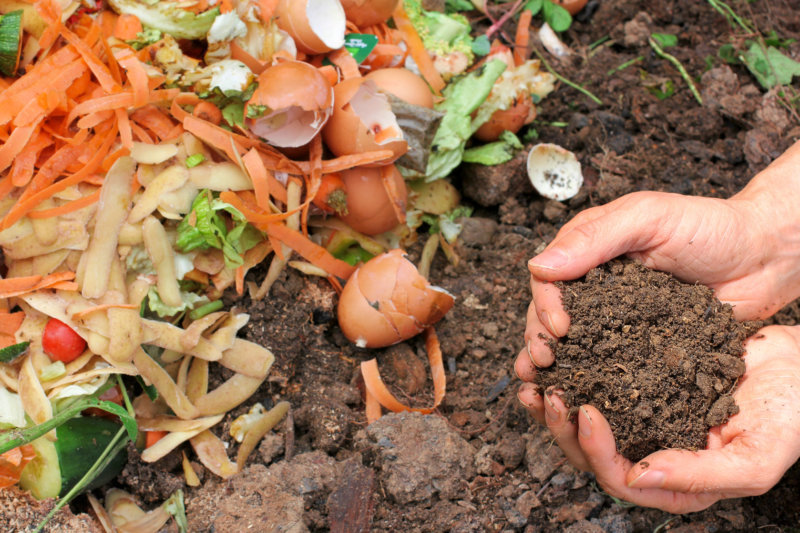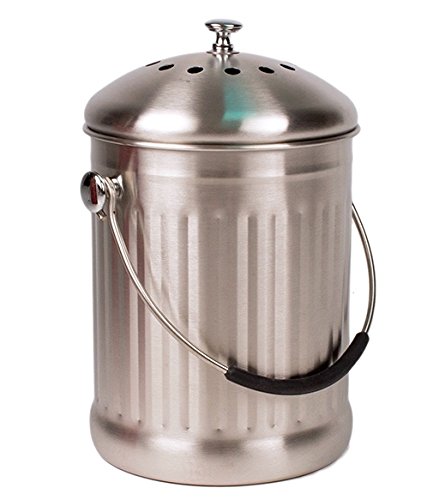Composting is the natural process of turning organic material into a rich loamy soil known as compost. Home composting is an acceleration of the same process nature uses. By composting your organic waste you are returning nutrients back into the soil in order for the cycle of life to continue. Finished compost looks like soil–dark brown, crumbly and smells like a forest floor. It is gold for the garden or potting plants. But how do you get started? What sort of organic material do you need to start composting? Our How to Start Composting guide will help you figure all that out!
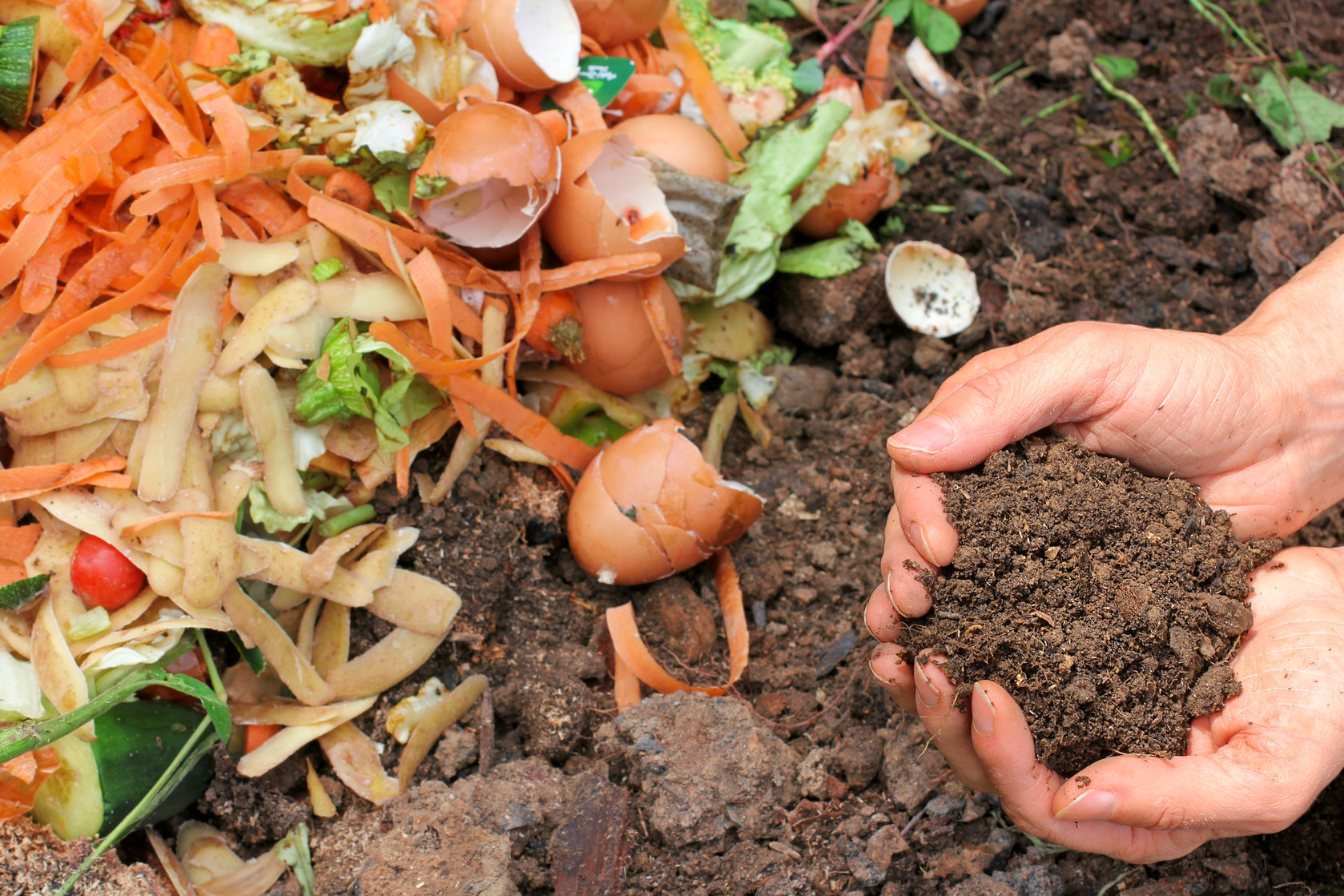
Composting 101
How to Start Composting
You’ll need greens and browns.
Greens are the kitchen scraps from vegetables and fruits that your household is consuming, coffee grounds, tea bags, egg shells, or grass clippings. Greens are rich in nitrogen.
Browns are things like leaves, wood chips, or straw. Browns are rich in carbon.
We use the VermiTek Countertop one at home. It’s the perfect size for leaving on your countertop and throwing in all your scraps as you’re cooking. Having it on your counter is a great composting reminder because it’s always right in view!
This post contains some affiliate links for your convenience. Click here to read our full disclosure policy.
Tools For Composting
- Something in the kitchen to hold compostable material
- Something outside to mix greens and browns in
- Pitchfork for larger compost bins
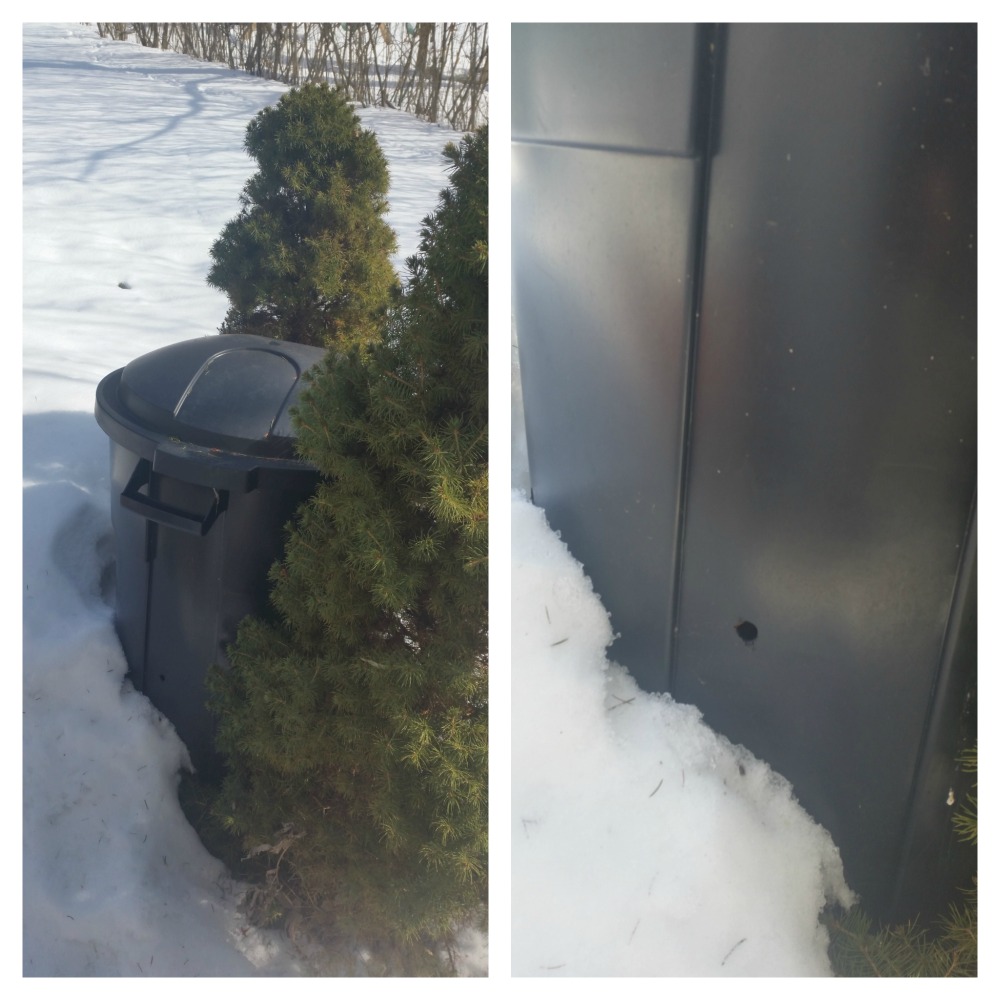
For the outdoor mixing, I use a black trashcan in the winter that has holes drilled into the sides and bottom. You can find these for pretty cheap at any hardware store. I fill it about half full of shredded leaves in the fall and then add the kitchen compost pail to it over the winter. I set the trash can at the end of the patio and that keeps me from having to trudge through the snow to the “way back” compost bins that are made from pallets and wire. Any fluid that comes out of the compost bin also feeds my shrubs at the end of the patio. Bonus!
To mix the greens and browns in the trash can I strap a couple of bungee cords across the top and then roll the can around the back yard a bit. Easy peasy!
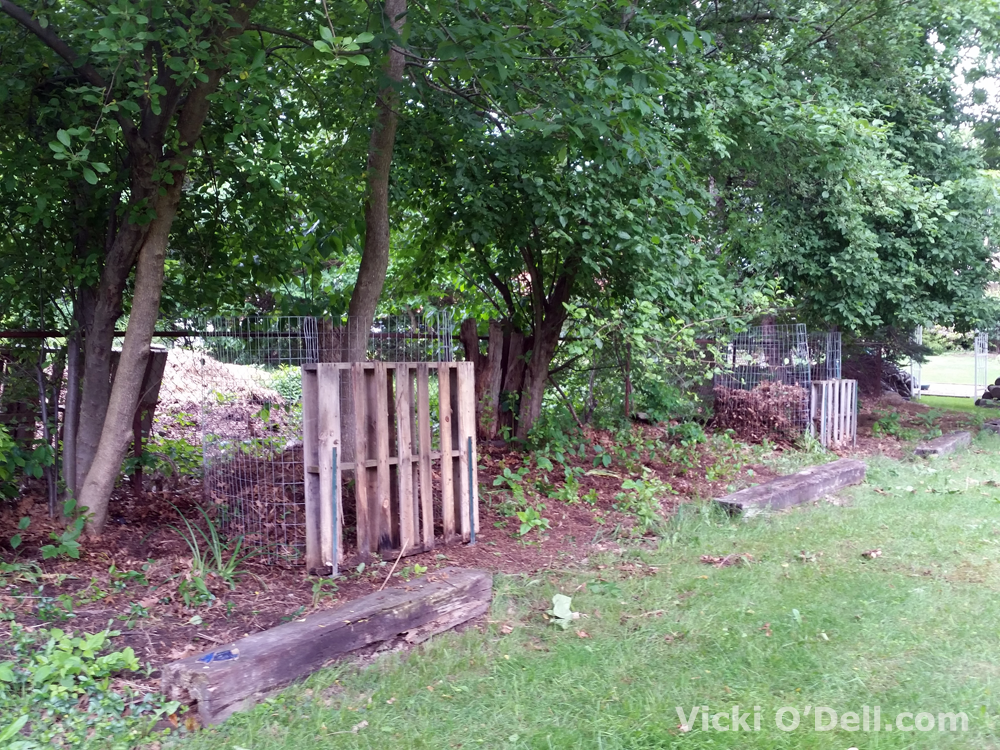
My summer compost is where I dump and mix the winter compost along with the summer’s grass clipping and a portion of fall leaves. I have to use a pitchfork to turn this compost because it is a much bigger area.
Composting Tips:
- Junk mail that has been shredded is good compost material
- Do not use meat, fats or oils, dairy products, manure from carnivores or diseased plants
- Do not plant plants directly in compost. Either place a ring of compost around the plant base or work it into the soil before planting.
- Compost that is still “cooking” is too hot for delicate plant roots. When it’s finished cooking it will be dark and you will not be able to identify the various bits that went into the compost bin.
- If your compost looks a bit dry and dusty you can give it a bit of water
- You can also use compost in potted plants. Make sure it is completely cooked and mix it with potting soil.
Composting Tips for Apartment Dwellers:
- Brown materials can include cardboard boxes and shredded paper
- You can compost dryer lint, hair, pet fur and nut shells
- Your outdoor compost bin can be placed on the balcony. Try using a cat litter bucket to start small but be sure not to drill drainage holes in the bottom unless you have a way to catch any liquid that may come out.
There you have it! Isn’t it easier to get started than you thought? You’re already creating all the scraps you need to get composting every day. Now all you need are the bins to start storing them and you’ll be creating nutrient rich dirt for your garden.

